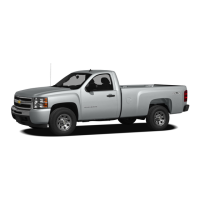
Do you have a question about the Chevrolet 2010 Silverado 1500 and is the answer not in the manual?
| Brand | Chevrolet |
|---|---|
| Model | 2010 Silverado 1500 |
| Category | Automobile |
| Language | English |
Overview of instrument panel versions (Base, Uplevel, Premium).
Key features for initial vehicle operation, including RKE and remote start.
Methods for locking and unlocking doors (power, manual, security locks).
Operation of manual, power, and power sliding rear windows.
How to adjust manual and power front seats, including lumbar support.
Operation of front seat heating functions and temperature settings.
Proper installation and adjustment of head restraints for occupant safety.
Information on proper safety belt usage and warnings.
How the passenger sensing system turns off the front passenger airbag.
How to adjust exterior mirrors using driver door controls.
How to adjust the steering wheel's tilt position.
How to change the position of the throttle and brake pedals.
Operation of dome lamps, reading lamps, and entry/exit lighting.
Operation of the exterior lamps control for headlamps and other lights.
How to operate windshield wipers and washer fluid spray.
Systems for controlling heating, cooling, and ventilation.
Information on range selection mode and four-wheel drive operation.
Overview of various vehicle features like radio, Bluetooth, and navigation.
How the DIC displays vehicle information and warning messages.
Operation and limitations of the cruise control system.
System that displays a view of the area behind the vehicle.
Sensor system that detects objects while parking.
How to use accessory power outlets for electrical equipment.
Programming buttons for garage door openers and home automation.
Operation of power sliding sunroof and sunshade.
Information on StabiliTrak, tire pressure monitoring, and oil life systems.
Proper installation and adjustment of head restraints for occupant safety.
Adjusting manual and power front seats, including lumbar support.
Adjusting manual lumbar support using the seat knob.
Operation of power lumbar support controls.
Operation of heated seat and seatback features.
How to save and recall seat, mirror, and pedal settings.
How to recline seatbacks manually or with power controls.
How front seatbacks tilt forward for access to the rear of the cab.
Features of the front center seat, including armrest and storage.
Operation of folding rear seats for different cab configurations.
Information on proper safety belt usage and warnings.
Guidance for using child restraint systems, including older children and infants.
How to secure a child restraint using a safety belt or LATCH system.
Airbag system and passenger sensing for front seat child restraints.
Using the airbag off switch for child restraints in the front seat.
Information on vehicle airbags, including locations and deployment.
How to check safety belts and airbag system readiness.
Procedures for inspecting and replacing restraint system parts after a crash.
Use of ignition key for ignition and door locks, and key tag information.
Operation of the remote keyless entry system and factors affecting its performance.
Methods for locking and unlocking doors (power, manual, security locks).
Operation of manual, power, and power sliding rear windows.
How to use sun visors to block glare.
Information on the vehicle's theft-deterrent alarm system.
How the passive theft-deterrent system prevents vehicle starting with the wrong key.
Guidelines for new vehicle break-in, ignition positions, and starting procedures.
How vehicle accessories can be used after the ignition is turned off.
Procedures for starting the engine, including cold weather and hybrid models.
System for increasing engine idle speed under specific conditions.
How to change the position of the throttle and brake pedals.
How the engine heater provides easier starting in cold weather.
System that operates the engine on half or all cylinders depending on conditions.
Explanation of shift positions and indicators.
Adjusts transmission shift pattern for heavy loads or towing.
How to shift into and out of different four-wheel drive modes.
How the front axle engages and disengages.
Procedure for shifting between 2WD High and 4WD High at any speed.
Procedure for shifting the transfer case to Neutral.
Procedure for shifting the transfer case out of Neutral.
Explanation of the electronic transfer case and its driving settings.
How to shift into 4WD High or AUTO mode.
How to shift into 2WD High mode.
Procedure and warnings for shifting into 4WD Low.
Procedure for shifting out of 4WD Low to other modes.
How to set and release the parking brake.
Procedure for shifting into Park, including warnings.
Safety precautions when leaving the vehicle with the engine running.
How to prevent and address torque lock in the transmission.
Warning about parking over flammable materials.
Information and warnings about engine exhaust and carbon monoxide.
Safety tips for running the engine while parked.
How to adjust manual, automatic dimming, and outside mirrors.
Information on the Ultrasonic Rear Parking Assist (URPA) system.
System that displays a view of the area behind the vehicle.
Programming buttons for garage door openers and home automation.
Location of glove box, cupholders, and console storage.
Operation of power sliding sunroof and sunshade.
Overview of the instrument panel, including hazard flashers, horn, and tilt wheel.
Operation of turn signals, lane changes, and other lever functions.
How to change headlamps from low to high beam.
Using high-beam headlamps to signal a driver.
How to control windshield wipers with the band on the lever.
How to spray washer fluid on the windshield.
Operation and limitations of the cruise control system.
How to control exterior lamps (headlamps, taillamps, etc.).
How DRLs make it easier for others to see the vehicle during the day.
System that turns on headlamps automatically when dark.
Control for fog lamps, located on the instrument panel.
Feature to control brightness of instrument panel lights.
How dome lamps turn on and off with doors.
Button to keep dome lamps off or on.
Illuminated entry feature for dome lamps.
Interior lamps turn on when the key is removed from ignition.
System that estimates battery state and adjusts voltage.
Feature that shuts off interior lamps if left on too long.
How to use accessory power outlets for electrical equipment.
Location and use of ashtrays and cigarette lighter.
Systems for controlling heating, cooling, and ventilation.
Signals that indicate a problem before it becomes serious.
Shows vehicle speed, engine hours, and other information.
Shows vehicle speed and distance driven.
Shows distance driven since last reset.
Displays engine speed in revolutions per minute.
Chime and light sequence to remind occupants to fasten safety belts.
Indicates if there is an electrical problem with the airbag system.
Indicates if the passenger airbag status indicator is on or off.
Shows status of the right front passenger frontal airbag.
Light that indicates a charging system problem.
Indicates battery voltage and charging system condition.
Indicates a problem with the brake system.
Indicates if there is a problem with the ABS system.
Light that comes on briefly while starting the engine.
Shows engine coolant temperature.
Indicates low tire pressure or TPMS malfunction.
General advice on defensive driving, road conditions, and vehicle control.
Driving techniques to anticipate and react to unexpected situations.
Dangers and effects of drinking and driving.
Systems that help control the vehicle: brakes, steering, accelerator.
Explanation of braking action, perception, and reaction times.
Electronic braking system that helps prevent a braking skid.
How ABS and Brake Assist help in emergency situations.
Vehicle stability enhancement system for directional control.
Feature for increased traction on slippery surfaces.
How to steer the vehicle, including tips for curves and emergencies.
How to recover the vehicle if it drops off the road.
Tips to reduce the risk of danger while passing.
Expert advice on what happens when control systems lack friction.
Using four-wheel drive for off-road driving and safety tips.
Advice for safely driving up, down, or across hills.
What to do if the vehicle stalls on an incline.
Driving tips for low traction conditions.
Safety tips for being stuck in snow.
How to free a stuck vehicle.
Method to free a stuck vehicle by shifting gears.
Proper use of recovery hooks.
Importance of knowing vehicle weight capacity and loading instructions.
Considerations before installing a snow plow.
Information on loading slide-in campers.
Important considerations before towing.
How to properly tow a disabled vehicle.
Towing the vehicle behind another vehicle for recreational purposes.
Towing vehicles with all four wheels on the ground.
Towing vehicles with wheels off the ground.
Important tips and safety rules for towing a trailer.
Information on receiving service and using genuine GM parts.
How non-dealer accessories can affect vehicle performance and safety.
Guidelines and warnings for performing vehicle maintenance.
Information on recommended fuel types and additives.
Use of recommended gasoline for proper engine maintenance.
Fuel specifications for California emission standards.
Recommended additives for cleaning fuel injectors and intake valves.
Information on using E85 fuel and its formulation.
Instructions and warnings for refueling the vehicle.
Safety precautions for filling portable fuel containers.
Warnings and advice for checking under the hood.
How to open the hood using the interior handle and secondary release.
Diagram and description of engine compartment components.
How to check and add engine oil, and oil life system.
Inspection and replacement procedures for the engine air cleaner/filter.
When to check and change automatic transmission fluid.
When to check and change automatic transmission fluid.
How the cooling system maintains engine temperature.
Explanation of engine coolant and mixture.
Indicators and messages for engine overheating.
When to check power steering fluid.
Fluid recommendations and how to add washer fluid.
Information on brake fluid, wear, adjustment, and parts replacement.
Information about the vehicle's maintenance-free battery and vehicle storage.
Safe procedures for jump starting a vehicle with jumper cables.
When to check rear axle lubricant.
Lubricant checks for four-wheel drive systems.
When to check and change transfer case lubricant.
When to check and change front axle lubricant.
Information on federal noise emission standards and tampering prohibitions.
How to adjust headlamp aim for proper beam cut-off.
Information on proper replacement bulbs and procedures.
Safety warnings for handling pressurized halogen bulbs.
How to replace headlamp bulbs.
How to replace bulbs for CHMSL and cargo lamps.
How to replace bulbs for pickup box and fender marker lamps.
How to replace bulbs for taillamps, turn signals, stoplamps, and back-up lamps.
How to replace license plate lamp bulbs.
Information on tire maintenance, including pressure and wear.
Classification and limitations of optional 20-inch tires.
Information molded into the tire sidewall.
Definitions of tire terms like Air Pressure, Aspect Ratio, Bead, etc.
Importance of correct air pressure and how to check it.
Warnings and requirements for driving at high speeds.
How dual wheel setups wear and rotate.
Warning system for low tire pressure and malfunctions.
What causes the TPMS malfunction light and messages.
How to match TPMS sensors to tire/wheel positions.
Importance and procedure for inspecting and rotating tires.
How to determine when new tires are needed.
GM recommendations for purchasing replacement tires.
Effects of different tire/wheel sizes on vehicle performance.
Tire grading system based on treadwear, traction, and temperature.
Explanation of traction grades.
Explanation of tire temperature grades.
Importance of alignment and balance for tire life and performance.
When and how to replace wheels.
Warnings and dangers of using used wheels.
Warnings and guidelines for using tire chains.
What to expect and do during a tire blowout.
Safe procedures for changing a flat tire.
Overview of required maintenance tasks and intervals.
How this maintenance section applies to vehicles with gasoline engines.
Details on scheduled maintenance tasks based on mileage or time.
Owner checks for starter switch, transmission shift lock, etc.
List of recommended fluids and lubricants by usage.
List of replacement parts by name, part number, or specification.
Diagrams showing engine drive belt routing for V6 and V8 engines.
Section to record service dates, odometer readings, and services performed.
Steps for customer satisfaction procedure and contact information.
Contact information for TTY users.
Contact information for writing or emailing Chevrolet.
Program to reimburse costs of adaptive equipment.
Contact information and services provided for roadside assistance.
How to contact dealer for warranty service and transportation needs.
Program offering transportation options during warranty repairs.
Importance of using qualified technicians and quality parts for collision repairs.
How to report safety defects to government agencies and General Motors.
How to order service manuals and technical bulletins.
Information about vehicle performance data recording and privacy.
Purpose of EDR in recording crash-related data.
Information on OnStar services and data collection.
Usage and data storage of the navigation system.
RFID technology used for vehicle functions like tire pressure monitoring.
Compliance with FCC and Industry Canada regulations.
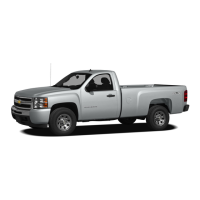
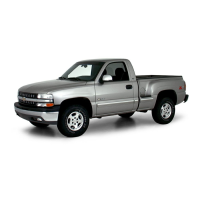
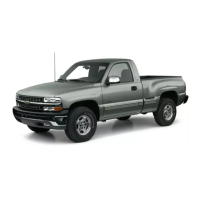
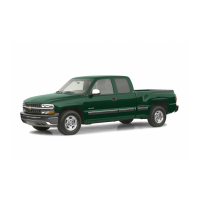
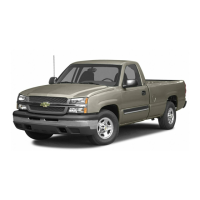
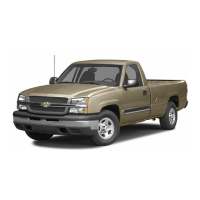

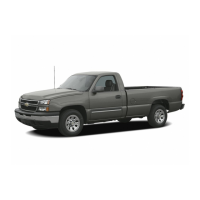
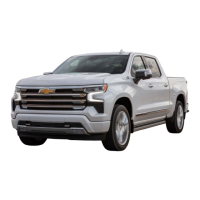

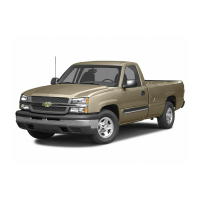

